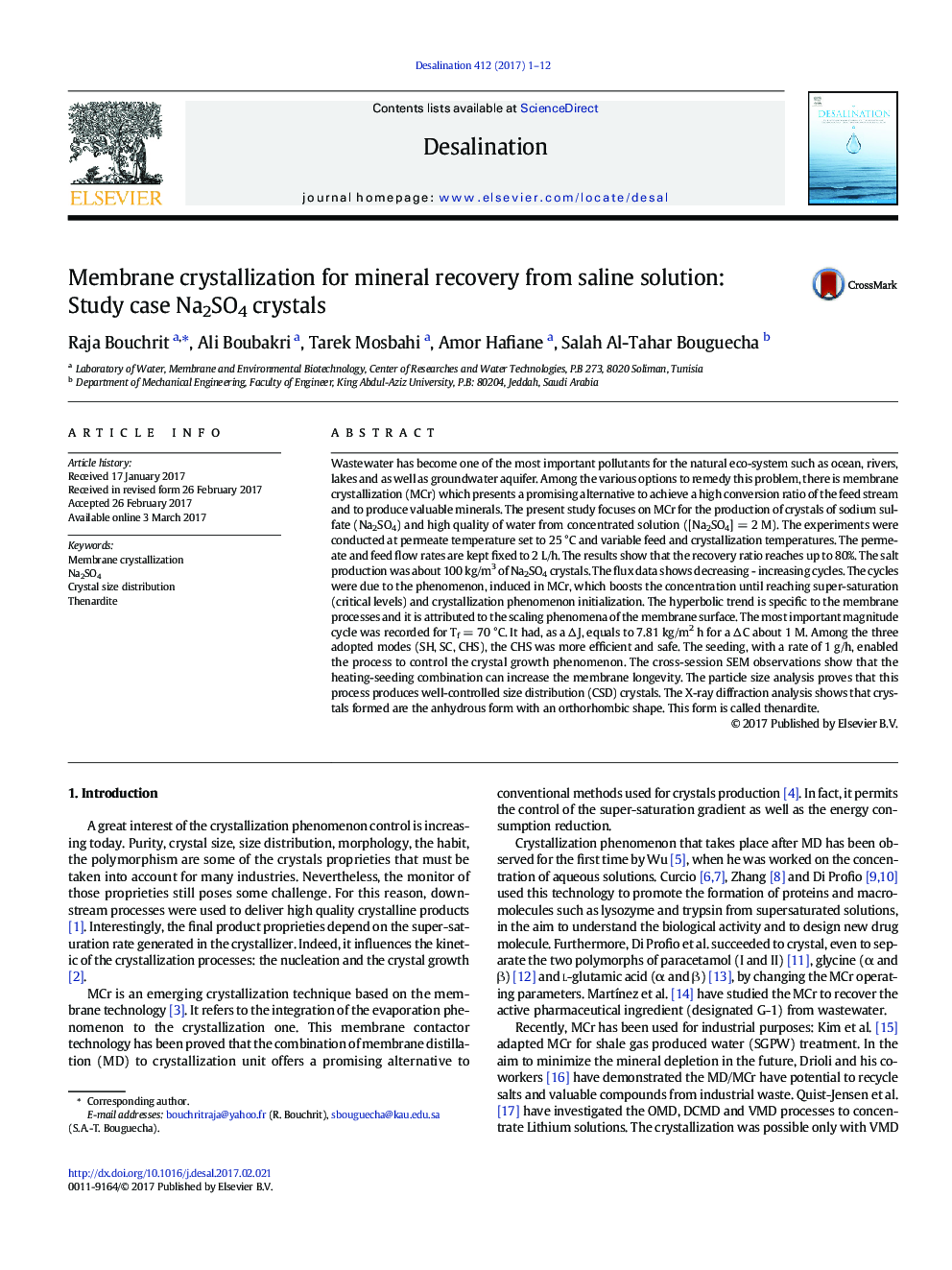| کد مقاله | کد نشریه | سال انتشار | مقاله انگلیسی | نسخه تمام متن |
|---|---|---|---|---|
| 4987726 | 1455283 | 2017 | 12 صفحه PDF | دانلود رایگان |

- Feed temperature effect on the DCMD permeate.
- TP and CP phenomena assessment.
- MCr efficiency in SC, SH, and CHS modes.
Wastewater has become one of the most important pollutants for the natural eco-system such as ocean, rivers, lakes and as well as groundwater aquifer. Among the various options to remedy this problem, there is membrane crystallization (MCr) which presents a promising alternative to achieve a high conversion ratio of the feed stream and to produce valuable minerals. The present study focuses on MCr for the production of crystals of sodium sulfate (Na2SO4) and high quality of water from concentrated solution ([Na2SO4] = 2 M). The experiments were conducted at permeate temperature set to 25 °C and variable feed and crystallization temperatures. The permeate and feed flow rates are kept fixed to 2 L/h. The results show that the recovery ratio reaches up to 80%. The salt production was about 100 kg/m3 of Na2SO4 crystals. The flux data shows decreasing - increasing cycles. The cycles were due to the phenomenon, induced in MCr, which boosts the concentration until reaching super-saturation (critical levels) and crystallization phenomenon initialization. The hyperbolic trend is specific to the membrane processes and it is attributed to the scaling phenomena of the membrane surface. The most important magnitude cycle was recorded for Tf = 70 °C. It had, as a â J, equals to 7.81 kg/m2 h for a â C about 1 M. Among the three adopted modes (SH, SC, CHS), the CHS was more efficient and safe. The seeding, with a rate of 1 g/h, enabled the process to control the crystal growth phenomenon. The cross-session SEM observations show that the heating-seeding combination can increase the membrane longevity. The particle size analysis proves that this process produces well-controlled size distribution (CSD) crystals. The X-ray diffraction analysis shows that crystals formed are the anhydrous form with an orthorhombic shape. This form is called thenardite.
Journal: Desalination - Volume 412, 15 June 2017, Pages 1-12